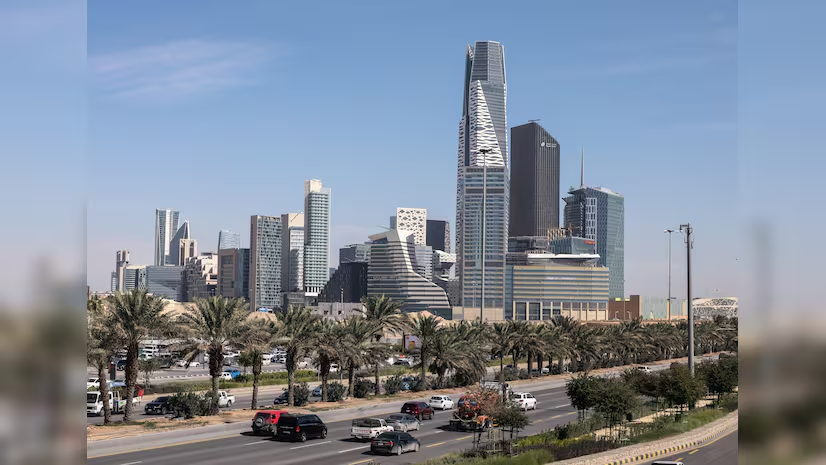Saudi Arabia’s technology plans may collapse if immediate and bold action is not taken before 2028. As the Kingdom pushes ahead with its Vision 2030 goals, a series of alarming gaps and delays threaten to derail its ambitious technological transformation. Experts warn that without correcting its course now, the Kingdom could face massive setbacks in innovation, global competitiveness, and digital leadership.
The warning is not just a prediction—it’s a wake-up call. Saudi Arabia’s bold aspirations in artificial intelligence, smart cities, space tech, and digital infrastructure are being watched closely by the global tech community. However, the rising concern is that the rapid pace of planning is not being matched by equally swift execution and sustainable groundwork.
Vision 2030: The Big Technology Dream

Vision 2030 was launched with the intention of reducing Saudi Arabia’s dependence on oil and positioning it as a global tech and innovation hub. The country announced projects like NEOM, a $500 billion smart city powered by AI and renewable energy, and massive investments in digital transformation across public and private sectors.
The vision was promising. Billions of dollars were allocated. Government partnerships with global tech giants like Google, Amazon, and Huawei were signed. The country even started exploring quantum computing, space technologies, and autonomous vehicles.
But planning is just one part of the equation.
The Cracks Beneath the Surface
As of 2025, several key challenges have begun to emerge:
1. Talent Shortage:
Saudi Arabia still lacks a large, trained local workforce in deep tech fields such as AI, cybersecurity, robotics, and big data. Heavy reliance on foreign talent creates sustainability issues and delays in implementation.
2. Education Gap:
There is a clear disconnect between education systems and the real-world skills needed to power the digital future. Universities have not adapted fast enough to match the pace of technological change.
3. Project Delays and Unclear Execution:
High-profile projects like NEOM have already seen multiple delays. Many initiatives are stuck in pilot phases or have been restructured, causing confusion and reduced investor confidence.
4. Limited R&D Ecosystem:
Saudi Arabia invests heavily in infrastructure but lags behind in research and development (R&D). Without innovation coming from within, the country risks becoming only a buyer of tech instead of a creator.
5. Cybersecurity Risks:
With growing digital adoption comes higher cyber threats. The Kingdom’s cybersecurity infrastructure is improving but remains behind compared to global leaders. A major cyberattack could cause immense damage to trust in digital systems.
Why 2028 Is the Critical Deadline
The year 2028 has emerged as a crucial benchmark. It’s the point by which many of Vision 2030’s tech projects are expected to show clear results. Without significant milestones by then, local and global stakeholders may lose confidence.
If Saudi Arabia’s technology plans may collapse by 2028, it won’t just be an internal problem. It will also impact foreign investment, job creation, and even national security.
Analysts suggest that by 2028, the global tech landscape will have moved significantly ahead—especially in AI, quantum tech, and green digital infrastructure. If Saudi Arabia is not in the top tier by then, it may struggle to catch up in the following decade.
What’s at Stake?
Failing to act now may lead to:
- Billions of dollars in wasted investments
- Public distrust in digital systems
- Lost global partnerships
- Reduced innovation and job opportunities
- A growing digital divide between Saudi Arabia and tech-leading countries
For a country aiming to be at the forefront of tech innovation, these risks are not just setbacks—they could be catastrophic.
The Way Forward: What Needs to Happen Now
To avoid this collapse, Saudi Arabia must take the following urgent steps:
1. Develop Local Talent Aggressively
Massive investment is needed in local education and training. Coding bootcamps, AI academies, and digital internships must become common. Partnerships between universities and tech companies can help bridge the skill gap faster.
2. Focus on Research and Innovation
Establishing tech parks, offering R&D tax incentives, and funding university labs will encourage homegrown innovation. Saudi Arabia must aim to create technology, not just use it.
3. Speed Up Execution
Red tape and bureaucracy need to be reduced. A dedicated “Technology Acceleration Task Force” could monitor key projects and ensure they remain on track.
4. Improve Cybersecurity Frameworks
Advanced threat detection, government cybersecurity drills, and private-public cooperation on data security are essential.
5. Include More Private Sector Involvement
Instead of just top-down government initiatives, Saudi Arabia should empower startups and SMEs to contribute to tech growth. Easier funding, mentorship programs, and tech incubators will foster grassroots innovation.
6. Strengthen International Collaborations
Expanding partnerships with countries leading in AI, IoT, and quantum computing will provide new ideas, strategies, and support systems to avoid stagnation.
Global Lessons to Learn From

Saudi Arabia can learn from countries like Singapore, South Korea, and the UAE, which have built thriving digital economies through consistent talent development, strategic government support, and focused execution.
Unlike oil, technology isn’t a resource that can be extracted. It must be nurtured. It requires long-term vision, daily effort, and most importantly—local ownership.
Conclusion: Still Time to Fix, But Clock is Ticking
Saudi Arabia’s technology plans may collapse by 2028, but it doesn’t have to end that way. The Kingdom still has time to correct its course. The world is watching, and the next three years are more important than ever.
With bold leadership, focused execution, and community-wide involvement, Saudi Arabia can still become a global leader in innovation. But the clock is ticking—and the decisions made today will define the digital future of tomorrow.
Also Read – The Essential Technology Skills Saudi Arabia Needs by 2026



